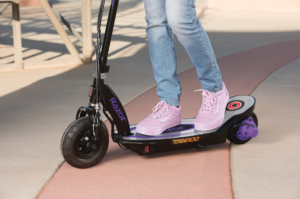As urban environments continue to evolve and sustainability becomes a more pressing concern, the choice between battery-powered scooters (battery scooties) and petrol-powered scooters (petrol scooties) is more relevant than ever.
Each type of scooty has its own set of advantages and disadvantages, and the best choice depends on your specific needs and preferences.
This article compares battery scooties and petrol scooties across several key factors to help you make an informed decision.
1. Environmental Impact
Battery Scooty:
- Eco-Friendly: Battery scooties produce zero emissions during operation, making them an environmentally friendly choice. They contribute to reducing air pollution and reliance on fossil fuels.
- Sustainable Energy: If charged using renewable energy sources, the environmental benefits are even greater.
Petrol Scooty:
- Emissions: Petrol scooties emit carbon dioxide and other pollutants, contributing to air pollution and global warming.
- Fuel Dependency: These scooters rely on fossil fuels, which are finite resources and contribute to environmental degradation.
2. Cost of Ownership
Battery Scooty:
- Initial Cost: Generally higher due to the cost of battery technology, but prices are decreasing as technology advances.
- Running Costs: Significantly lower. Charging a battery scooty costs much less than refueling a petrol scooty. Maintenance costs are also lower due to fewer moving parts.
- Incentives: Many governments offer subsidies and incentives for purchasing electric vehicles, which can offset the initial cost.
Petrol Scooty:
- Initial Cost: Typically lower than battery scooties.
- Running Costs: Higher due to the cost of petrol and more frequent maintenance requirements (e.g., oil changes, engine maintenance).
- No Incentives: Fewer or no government incentives available.
3. Performance and Convenience
Battery Scooty:
- Range: Limited by battery capacity, with most models offering 50-100 km per charge. High-end models can provide longer ranges.
- Charging Time: Takes several hours to fully charge, but fast-charging options are becoming more common.
- Noise and Vibration: Quieter and smoother operation with minimal noise and vibration.
- Instant Torque: Electric motors provide instant torque, resulting in quick acceleration.
Petrol Scooty:
- Range: Typically longer than battery scooties, as refueling is quick and petrol is widely available.
- Refueling Time: Takes only a few minutes to refuel.
- Noise and Vibration: Generally noisier and more prone to vibrations due to the internal combustion engine.
- Power: Offers consistent power delivery and can handle longer distances without the need for extended stops.
4. Maintenance and Durability
Battery Scooty:
- Maintenance: Lower maintenance requirements with fewer parts that can wear out. Key areas include the battery, electric motor, and tires.
- Durability: Modern electric scooters are built to last, with batteries typically lasting several years before needing replacement.
Petrol Scooty:
- Maintenance: Requires regular maintenance, including oil changes, engine tuning, and exhaust system checks.
- Durability: Petrol scooties are robust and can handle rougher conditions, but require consistent upkeep to maintain performance.
5. Infrastructure and Availability
Battery Scooty:
- Charging Infrastructure: Still developing, with increasing numbers of public charging stations. Home charging setups are convenient but require planning.
- Availability: Growing market with more models and brands entering the space, but may still be less available than petrol models in some regions.
Petrol Scooty:
- Fueling Infrastructure: Well-established and widespread, with petrol stations readily available.
- Availability: Widely available with a vast range of models from numerous manufacturers.
6. Government Policies and Incentives
Battery Scooty:
- Incentives: Often eligible for government subsidies, tax rebates, and other incentives aimed at promoting electric vehicles.
- Regulations: Increasingly supported by policies aimed at reducing emissions and promoting clean energy.
Petrol Scooty:
- Incentives: Generally not eligible for environmental incentives.
- Regulations: Facing stricter emissions regulations, which may increase costs over time.
Conclusion
Choosing between a battery scooty and a petrol scooty depends on various factors, including your environmental values, budget, commuting needs, and availability of infrastructure.
Battery scooties offer significant long-term savings, environmental benefits, and low maintenance, making them an excellent choice for eco-conscious urban commuters.
However, petrol scooties provide greater range, quick refueling, and widespread availability, which can be advantageous for longer commutes and areas with less developed charging infrastructure.
Evaluate your specific needs and priorities to make the best choice for your daily transportation.



